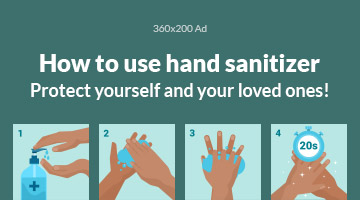Dry eye is a disease that appears when the eyeball lacks the tear film necessary to moisturize the eyes. “Various factors generate alterations in the quantity and quality of the tear, which increases its osmolarity (concentration of salts) and favors inflammation so that the tear no longer protects the ocular surface and begins to present small wounds that can worsen,” They explain from the Dry Eye Unit of the Jiménez Díaz Foundation University Hospital (Madrid).
“It is estimated that dry eye affects one in ten Spanish adults over 40 years of age, although other figures raise the prevalence to between 15 and 30% of the total population. A Spanish study, carried out in 2008 in the Galician region de O Salnés (Pontevedra), he calculated that it affected 11% of the population “, points out José Manuel Benítez del Castillo, professor of Ophthalmology at the Complutense University of Madrid (UCM) and ophthalmologist at the Rementería Clinic. This expert on dry eyes comments that, precisely, he is going to initiate another study that investigates the prevalence in the rest of Spain. “When analyzing areas like Madrid, where the relative humidity is much lower than on the coast, we may see that there are more cases.”
Causes
The causes of dry eye are multiple:
Advanced age is a risk factor: around 75% of people over 70 years of age suffer from dry eye in some of its phases.
25% is due to hormonal alterations. For this reason, the dry eye seems to increase in menopause.
10% of cases arise from working for a long time at the computer. Users who spend long hours in front of monitors do not blink enough to produce tears.
Contact lenses increase the possibility of suffering from this disease since their use tends to dry out the eye.
Posterior blepharitis or meibomian gland dysfunction.
Diabetes is also a trigger, thyroid dysfunction (changes in the thyroid), asthma, systemic lupus erythematosus (SLE), autoimmune diseases such as Sjögren's syndrome, and ophthalmological diseases as glaucoma or cataracts, especially if the patient has undergone surgery for this cause.
Some anxiolytics, antidepressants, antidepressants, antihistamines, diuretics, beta-blockers, and oral contraceptives can also lead to dry eye.Other environmental triggers, such as exposure to tobacco smoke, air pollution, wind, heating, air conditioning, and dry climates. These elements help to evaporate the tear and induce dryness.
Symptoms
In an initial stage, the first manifestations of this disease consist of the sensation of grit in the eye, burning, stinging, reflex tearing, blurred vision, hypersensitivity to light, or itching.
In more advanced stages, microemulsions and small ulcerations appear.
In a third stage, corneal ulcers, recurrent (repeated) infections, and loss of visual acuity arise.
Every change of season entails a variation in environmental conditions, and the body notices this. Eye discomfort is related to dry eyes, and, in some people, allergic problems may appear in the fall, although this is usually more frequent in spring. What are your causes? As Jorge Vila Arteaga, an ophthalmologist at the Vila Clinic in Valencia, explains, it is common for there to be a certain predisposition: “Some people have an alteration in the tear that can affect both its quantity and quality. It is what we call dry eye syndrome”.
Eye or general diseases, hormonal changes, treatments with some drugs, or age influence dry eye syndrome. “All this worsens when environmental conditions change when there is more pollution, or we spend more hours in front of the computer and, therefore, we blink less frequently,” says the expert.
Certain factors favor the appearance of dry eyes. The tear composition, which protects the eye, is modified by hormonal changes linked to menopause and some immune-type diseases, such as Sjögren’s syndrome, or of rheumatic origin. Also, some drugs can make symptoms worse. People who have recently had an eye disease, such as conjunctivitis or required eye surgery, also have a greater predisposition. “Another factor that we must not forget is the hours that some of us spend in front of the computer; this forces us to fix our gaze for too long, blinking less frequently and increasing the evaporation of the tear film,” Vila warns.
How can it be prevented?
Some of these factors can be prevented. Here are some tips to get it:
Position yourself correctly at the computer and rest your eyes from time to time so that the eye relaxes and the ocular surface recovers.
Treat eye diseases correctly so that sequelae such as dryness do not occur. "Sometimes, it is convenient to prolong the treatment beyond when we notice the symptoms," Vila clarifies.
Follow a diet rich in omega 3 and low in omega 6. As the expert affirms, "there are more and more studies that give greater importance to correct nutrition in the prevention and treatment of dry eyes. Nutritional balance is also essential for the eye".Tips to Relieve Dry Eye Symptoms
Irritation, pain, burning … are just some of the symptoms of Dry Eye Syndrome, one of the most common ophthalmological diseases. It is estimated that 30% of people who visit their ophthalmologist do so for this reason. Dry Eye Syndrome (SOS) is a disease that has no cure but can be controlled. From Laboratorios Normon, we will give you a series of tips to alleviate the symptoms of dry eye. But first … let’s talk a little more about this pathology.
Artificial tears mimic the composition of tears as much as possible, helping to maintain moisture and lubrication of the ocular surface. Currently, there are both preservative-free and preservative-free tears on the market.
What is Dry Eye Syndrome?
SOS is a disease that affects the ocular surface. The surface of our eyes is moist, too, among other things, facilitating the gliding of our eyelids over the eyeball.
Tears are what keep the outermost part of our eyes lubricated. The maintenance of humidity in this part of our anatomy depends on the formation and drainage of tears, which, in turn, depends on blinking.







